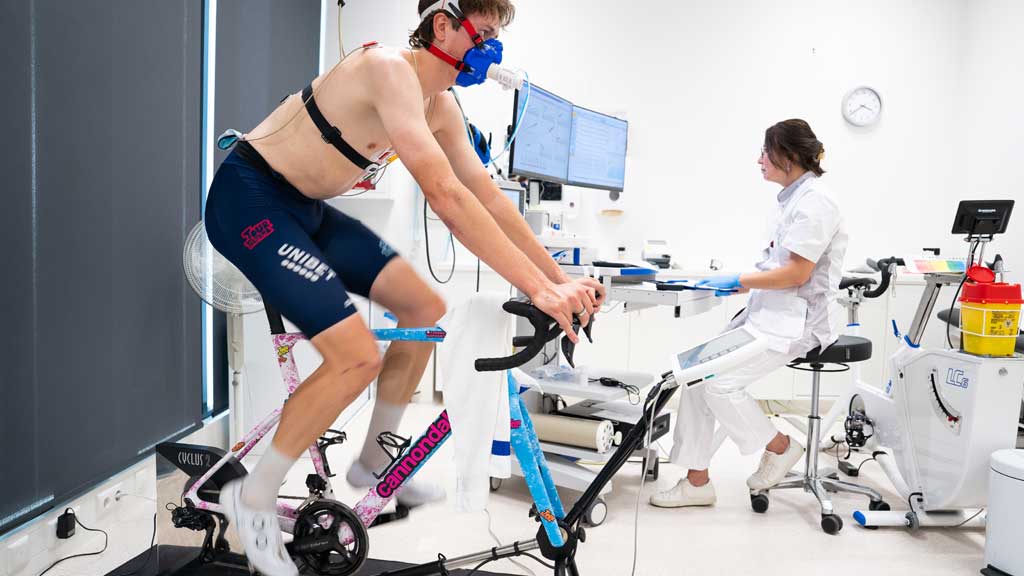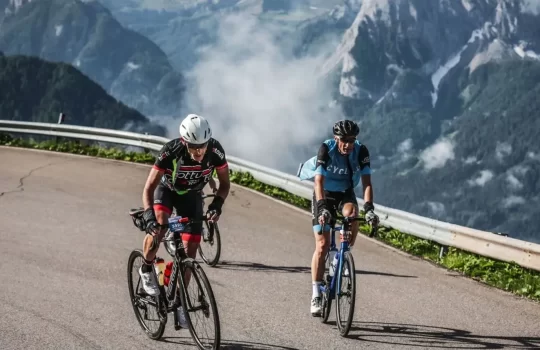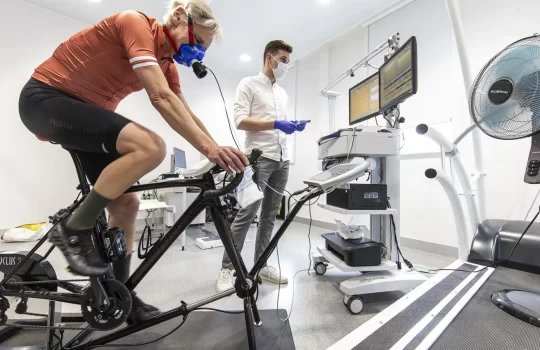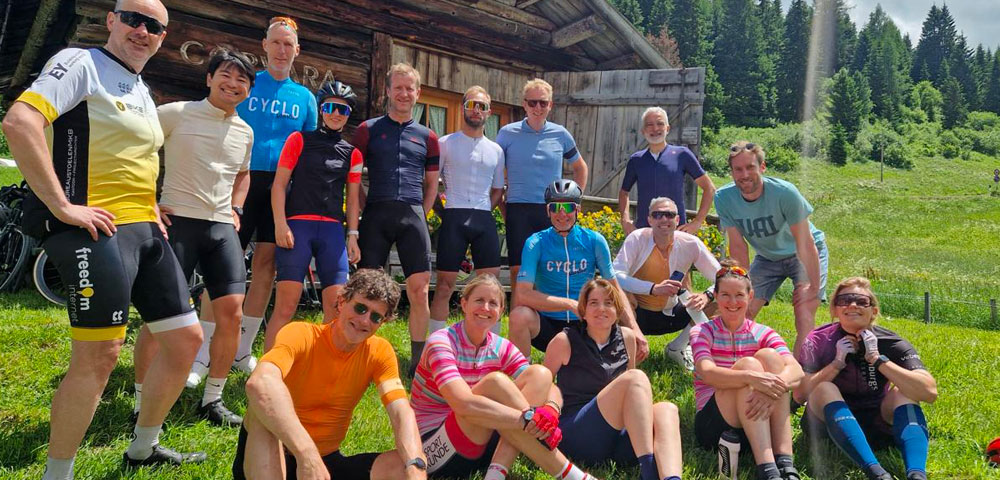How important is an effort test?
CYCLOsportive spoke with exercise physiologist Tim Veneman from the Jeroen Bosch Hospital Sports Medical Center to answer this question.

WielerFit XL is a coaching program for all cyclists and mountain bikers, from recreational cyclists to (semi) professionals. Healthy exercise and performance on the bike for everyone, that is our goal! With the team of Wielerfit XL, the Sports Medical Center of the Jeroen Bosch Hospital offers optimal care, advice and coaching for cyclists at every level. Today, Tim Veneman, exercise physiologist, is speaking.
What are the main effort tests you perform for cyclists, and why are these tests so important?
During a maximum effort test, you start cycling at a leisurely pace, after which the wattage is gradually increased until you reach your maximum effort. During the test, various measurements are performed, such as continuous measurement of your gas exchange (oxygen and carbon dioxide concentrations via an effort mask), continuous heart rate measurement, an ECG (electrocardiogram) and, if desired, lactate measurements via a small prick in the ear. Tests can be performed on your own racing bike, to ensure that the effort matches the effort in a practical situation as closely as possible. Effort tests are important for cyclists, because they provide valuable insights into condition, threshold values and health (particularly the load capacity of the heart and lungs).
Also read: How to prepare for a multi-day cycling trip
How does an effort test and associated training schedule help to minimize the risk of overload?
Important results of an exercise test are the maximum oxygen uptake (VO2max), a measure of your maximum aerobic capacity, and the threshold values (also called aerobic and anaerobic threshold, or first and second ventilatory threshold). Based on these threshold values, personal training zones can be determined, based on heart rate or power. With these training zones, a customized training program can then be created, based on alternating blocks of low-intensity endurance training and high-intensity interval training. By mapping out the training zones properly, the personal training load can be estimated more specifically and the balance between training load and the body's resilience can be better monitored. This reduces the risk of overtraining and increases the effectiveness of training programs.
Also read: Keep cycling in autumn and winter
What are the biggest mistakes you often see amateur cyclists make in their training programs and how can they avoid them to prevent injuries or overtraining?
It will sound familiar to many amateur cyclists: Almost every ride full throttle, aiming for an average of at least 30 km/h. Nice for Strava, but not necessarily the most efficient way to train. Many amateur cyclists train with too high an intensity and do not vary their training enough. For cyclists who are on the bike for an hour 1 to 2 times a week, this is not such a problem, but for cyclists who do more training hours, a more targeted training approach can make a big difference.
What is an effective method of training?
A proven effective method for endurance athletes is polarized training, in which a specific distinction is made between low and high intensity training rides. During longer endurance rides at low intensity, you train the body to efficiently transport oxygen and nutrients and convert them into energy in your muscles. With shorter high-intensity interval training, you train the energy systems for higher exertion intensities and work on explosiveness. A good guideline is that the ratio between training time in low and high intensity training zones should be approximately 80/20: 80% of the time at low intensity, 20% at high intensity. Make sure that you gradually build up the training duration and intensity, and determine training zones based on objective test data from an effort test.
In addition, strength training is overlooked by many amateur cyclists, while it is a valuable addition to the training program. In sports with repetitive movements, such as cycling, the same muscles and joints are constantly strained. By including targeted strength training in your training schedule, you increase the load capacity of these muscles and joints. This allows you to strengthen these muscles and reduce the risk of injuries.
Also read: Prepare well and make your Granfondo a success
What mistake do cyclists most often make when preparing for a Gran Fondo?
A common mistake, specifically among cyclists working towards a Gran Fondo or other cycling event, is that cyclists continue to do heavy training in the last weeks and days before the event. This gives some people the confidence that they have done everything they can in terms of training, but in practice it often results in cyclists being tired at the start. The most important training work should have been done before the last few weeks. In the week before a cycling event, it is important to mainly make easy rides and take sufficient rest. Have confidence in the preparation!

Tim Veneman
Age: 32
Occupation: Exercise physiologist
Background: During my studies in Human Movement Sciences, I specialized in exercise physiology. With this expertise, I worked with cyclists at various locations, including Sportcentrum Papendal, where I worked with track cyclists as embedded scientists. In addition, I conducted research into optimal pacing strategies for time trials in cyclists. For 1.5 years, I have been working as an exercise physiologist at the Sports Medical Center of the Jeroen Bosch Hospital, where we perform exercise tests on cyclists from Visma-Lease a Bike and Unibet Tietema Rockets, as well as for amateur athletes and patients.
How many hours per week do you spend on your bike: I am a typical fair weather cyclist; In the summer I regularly go for a nice ride, but in the winter the racing bike often remains unused in the shed for a long time.










